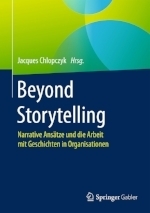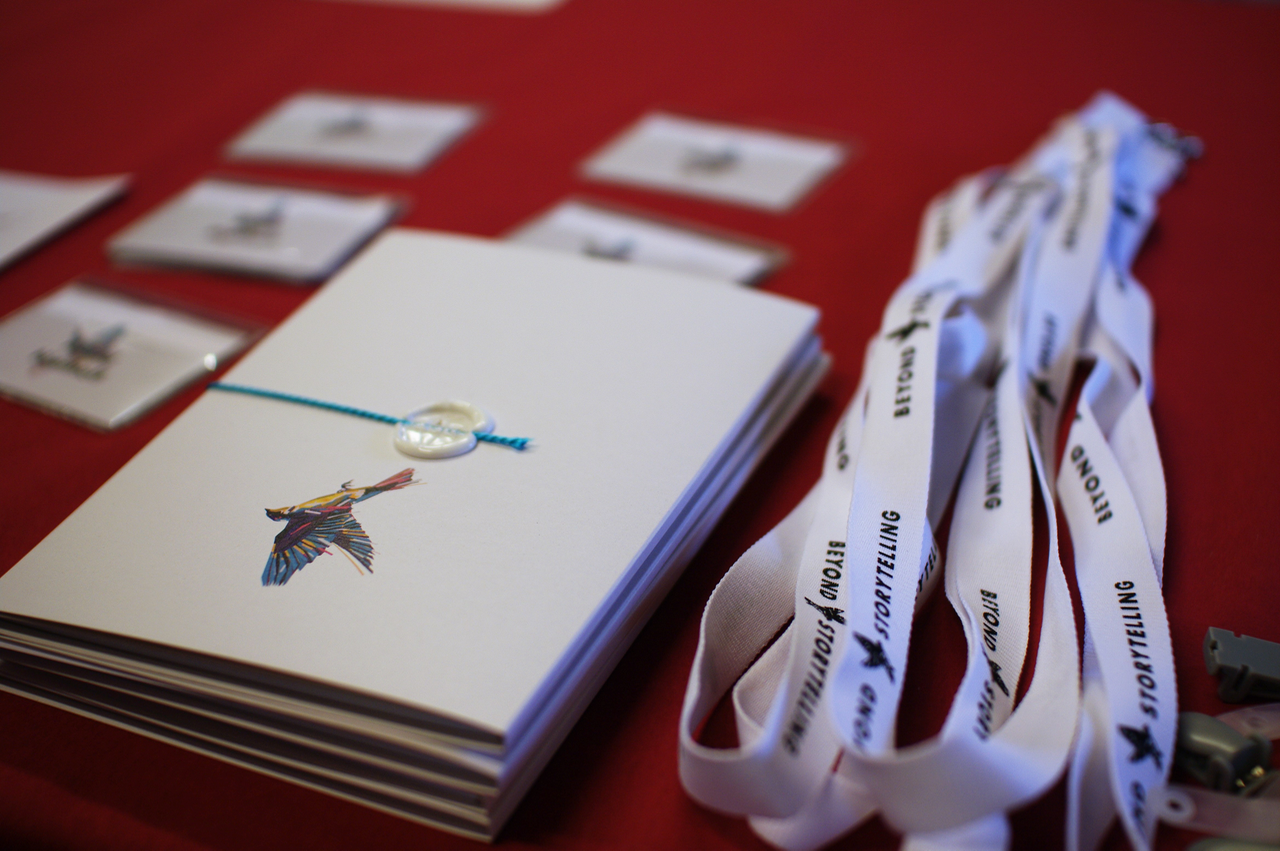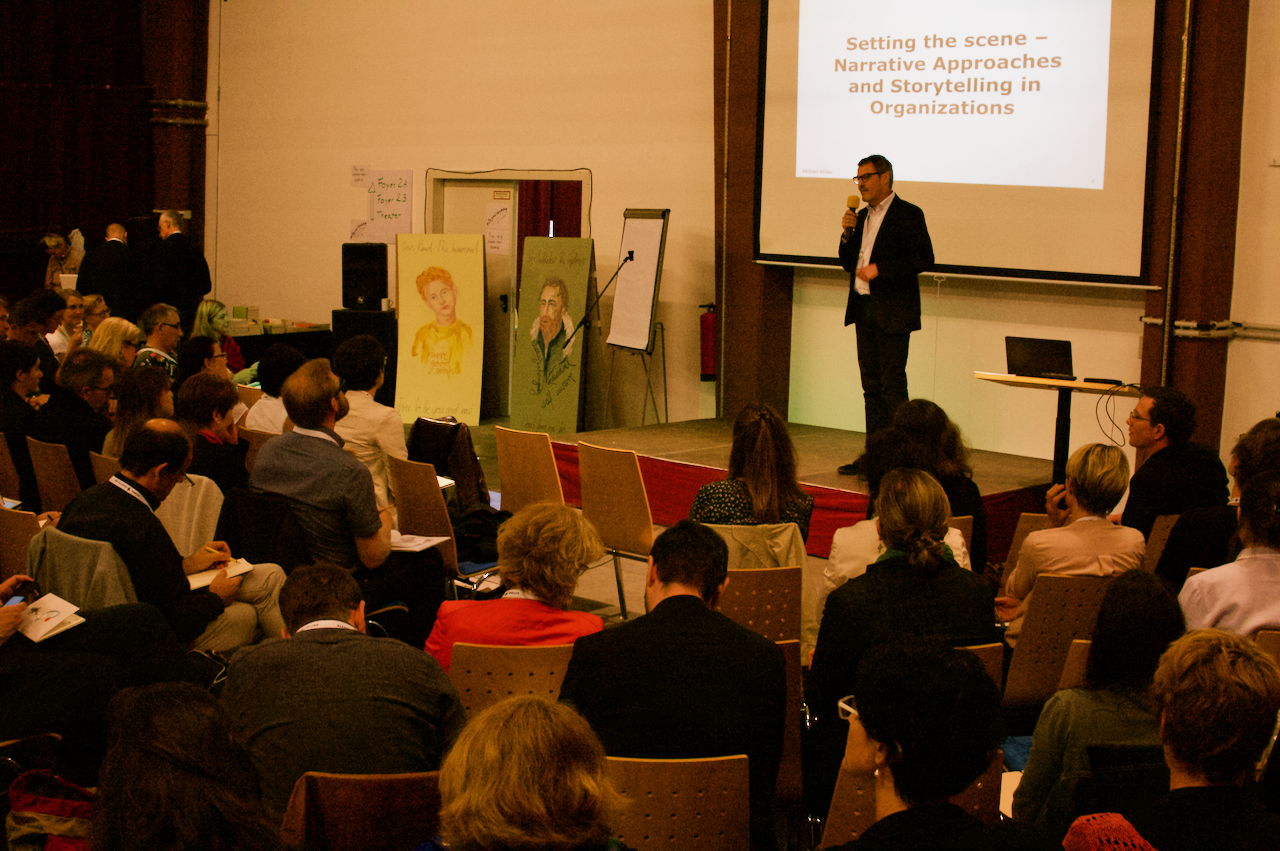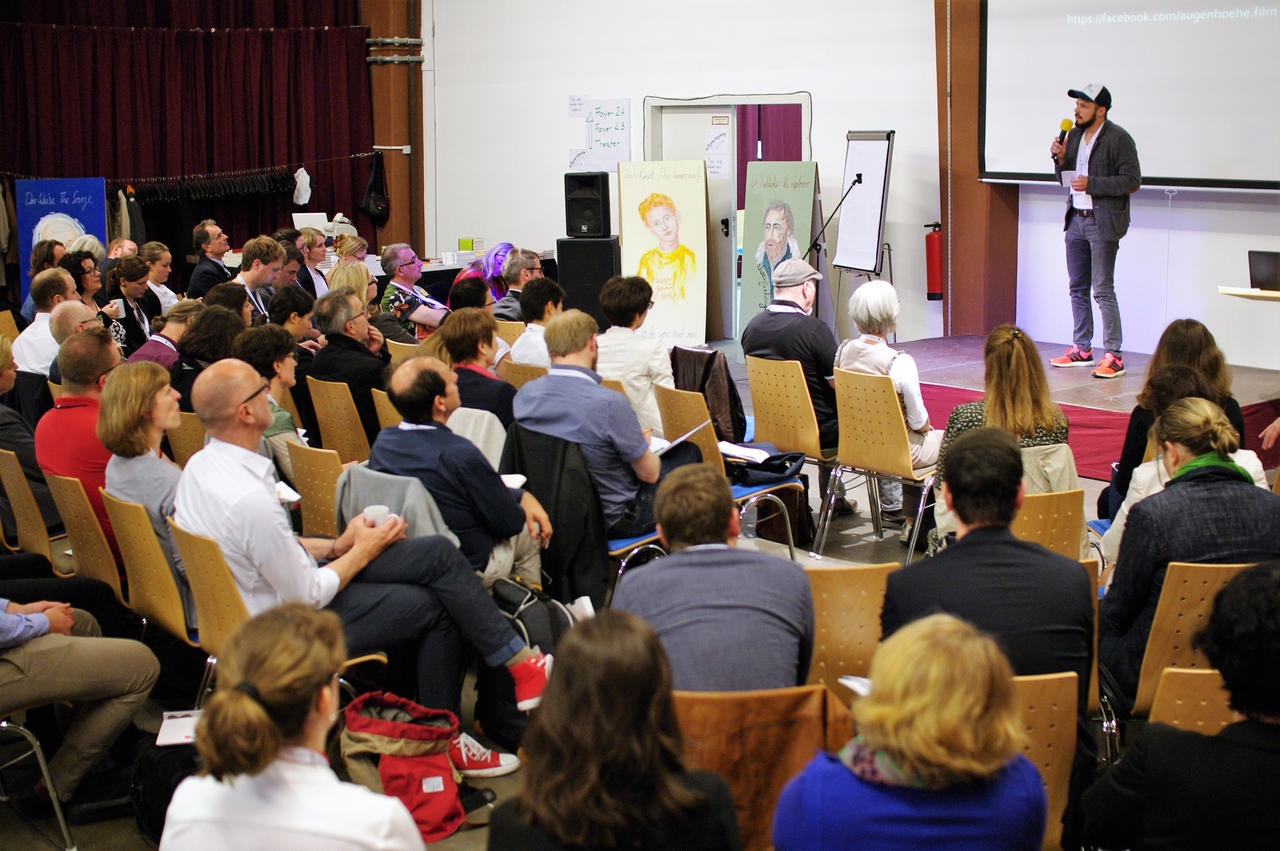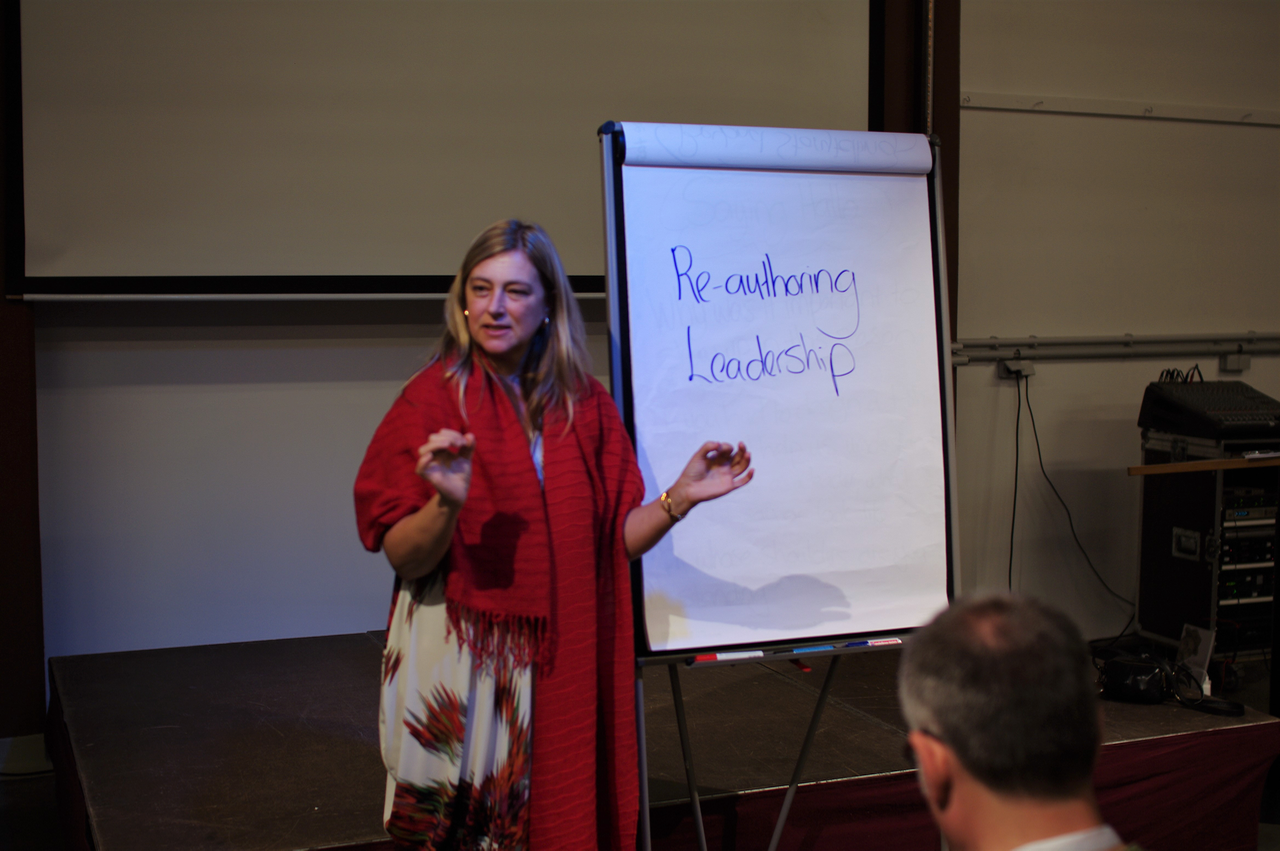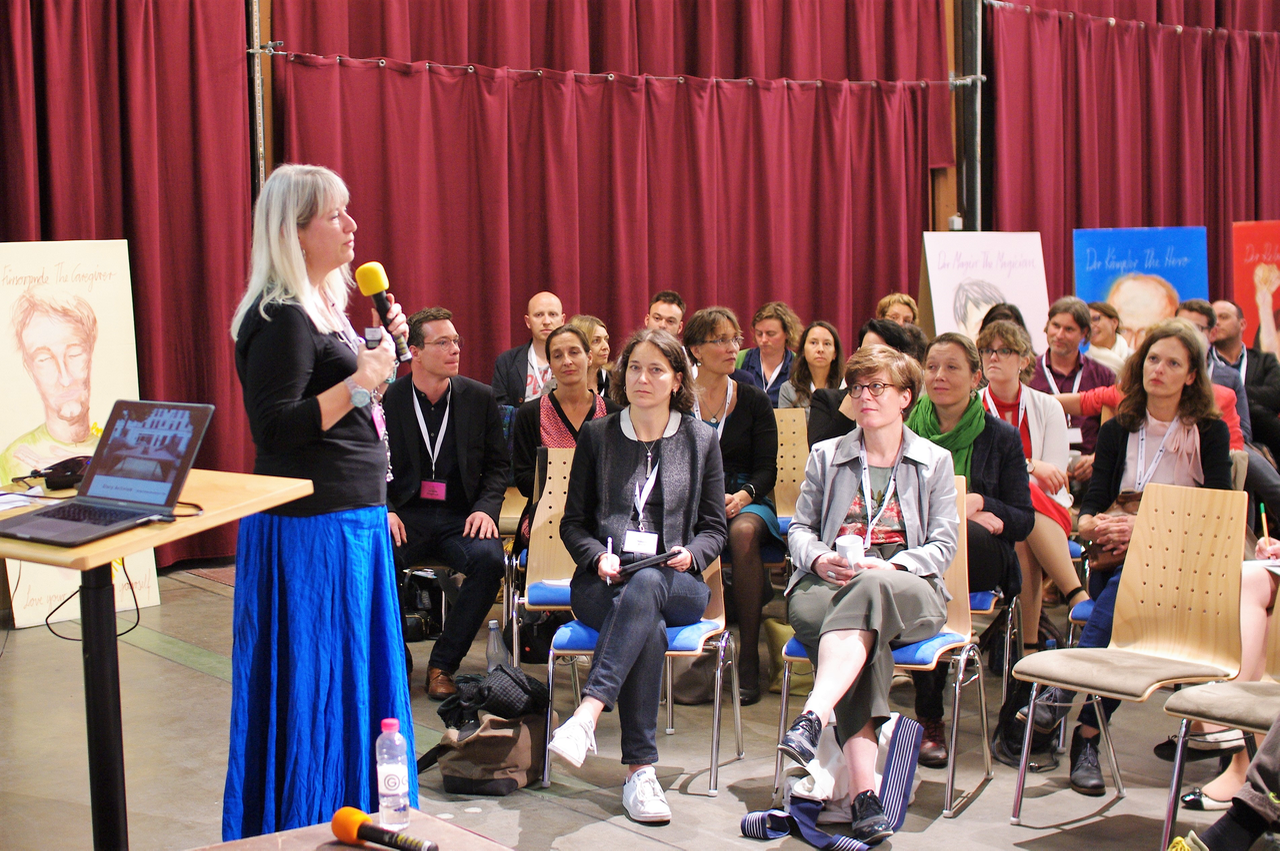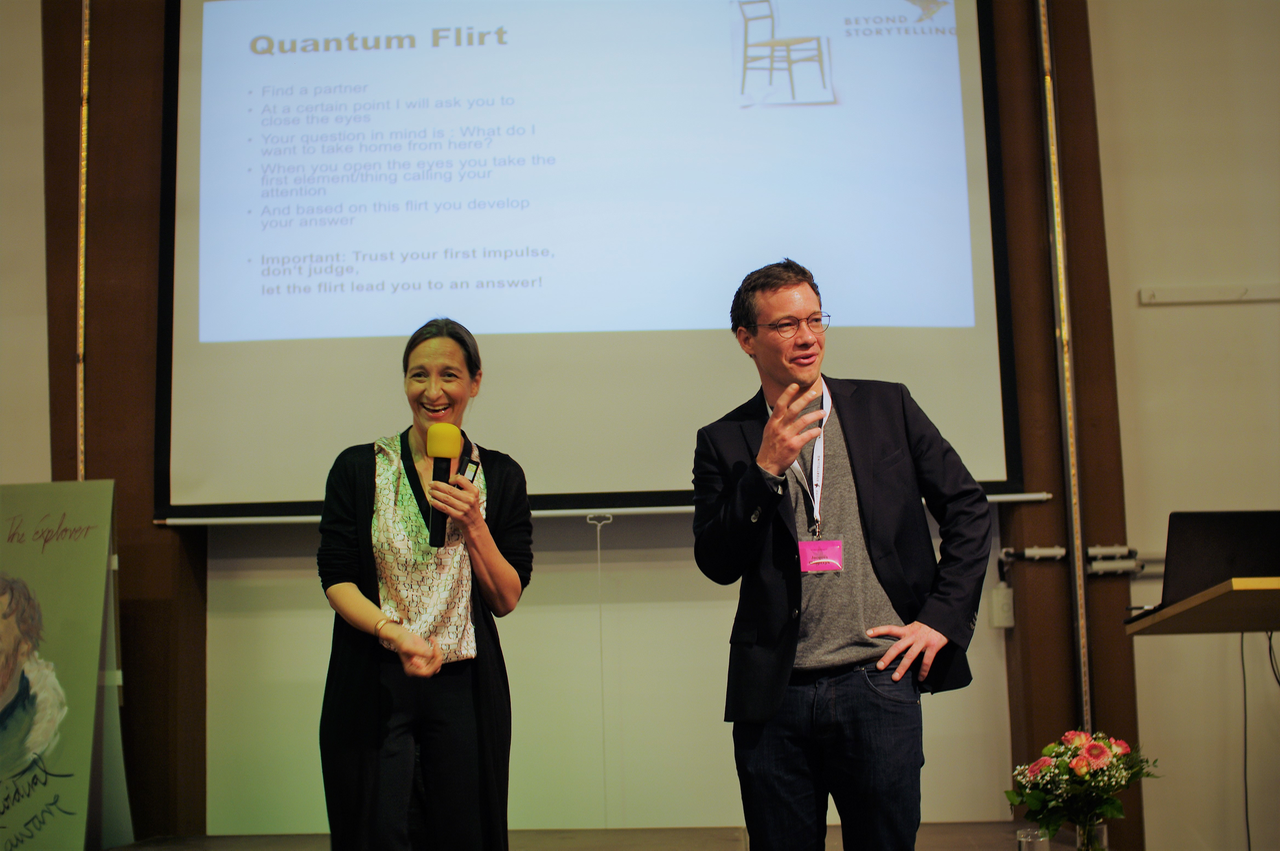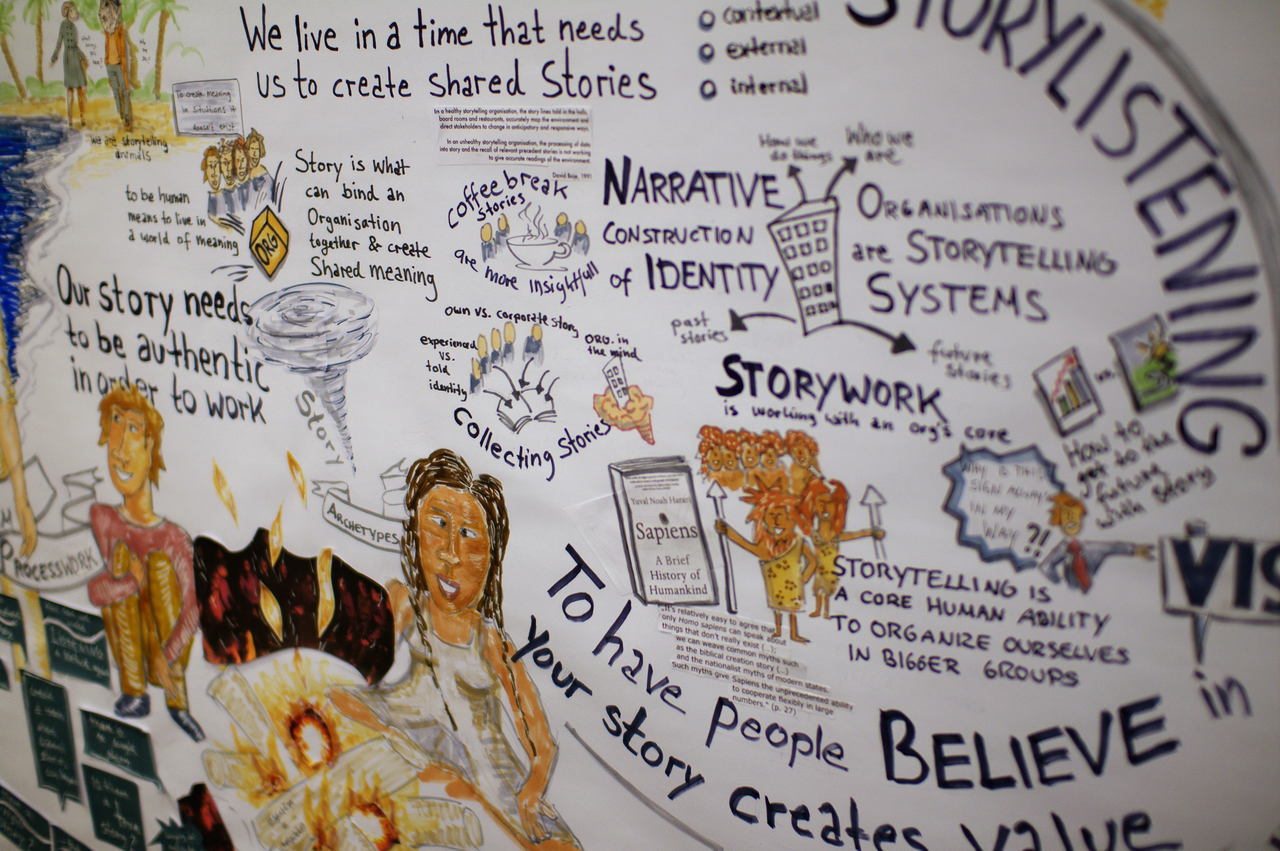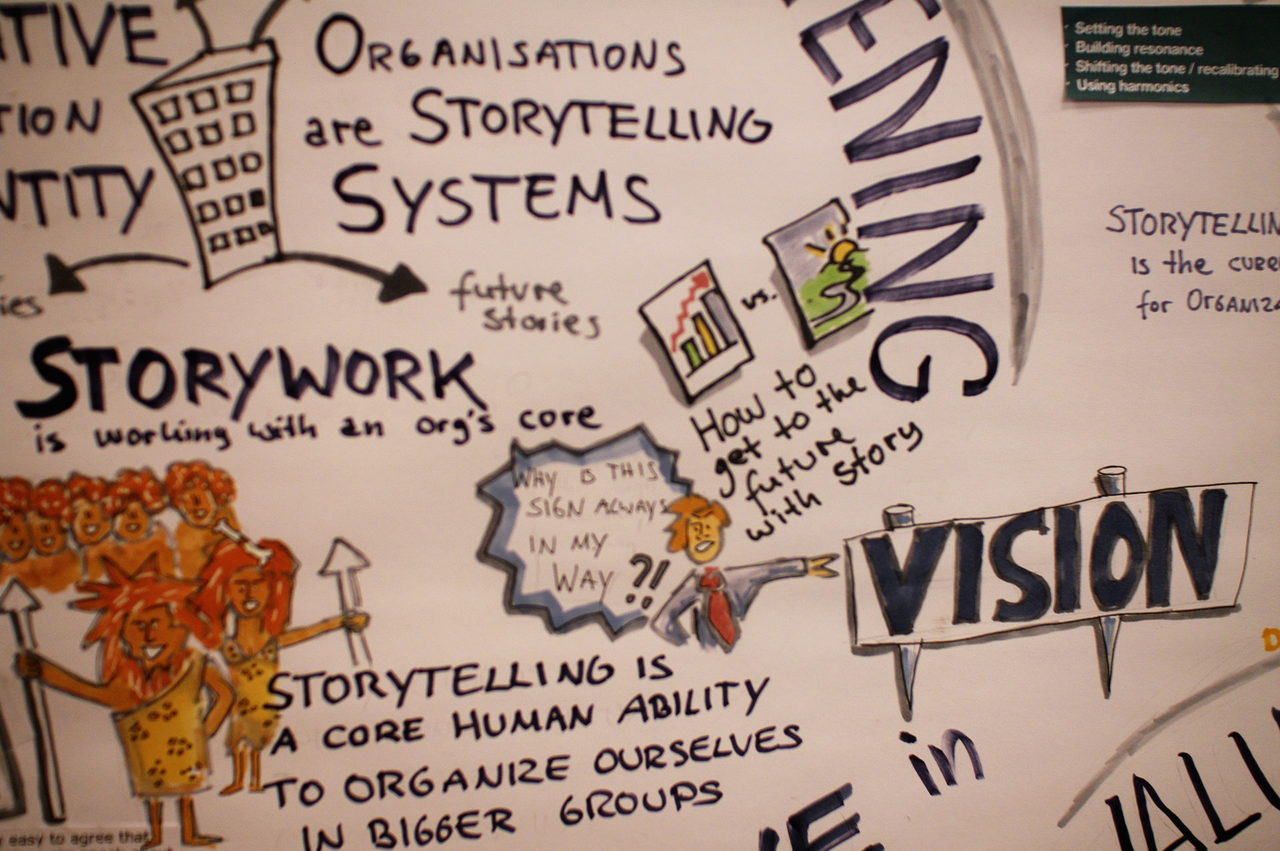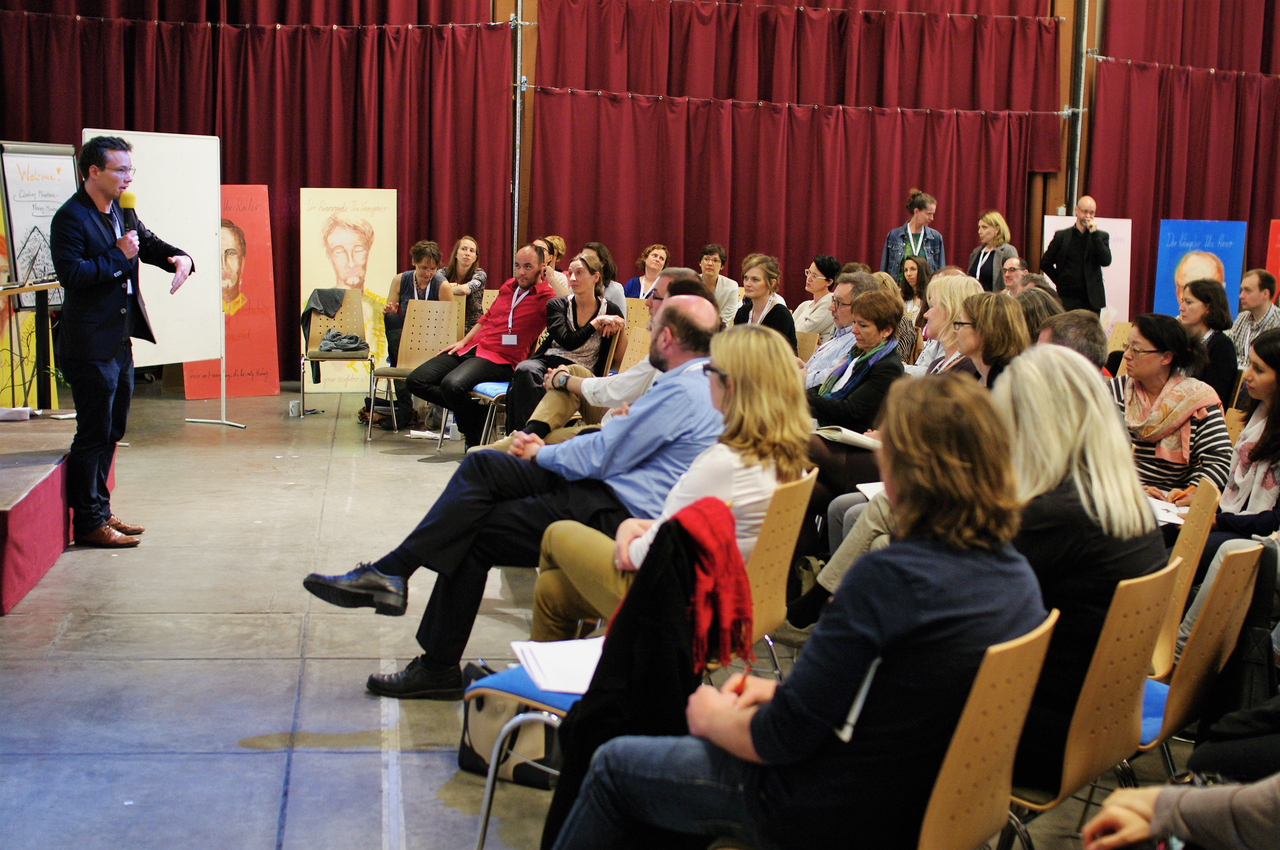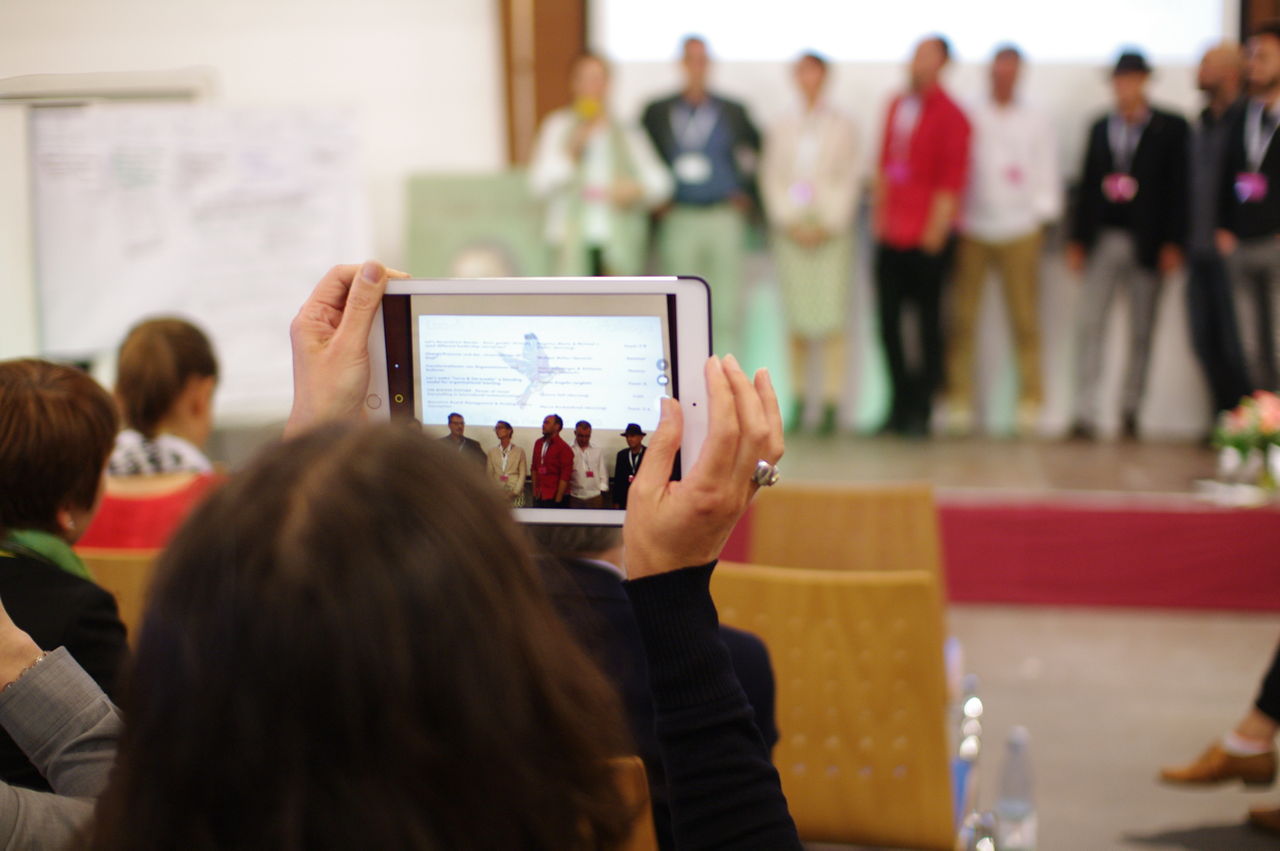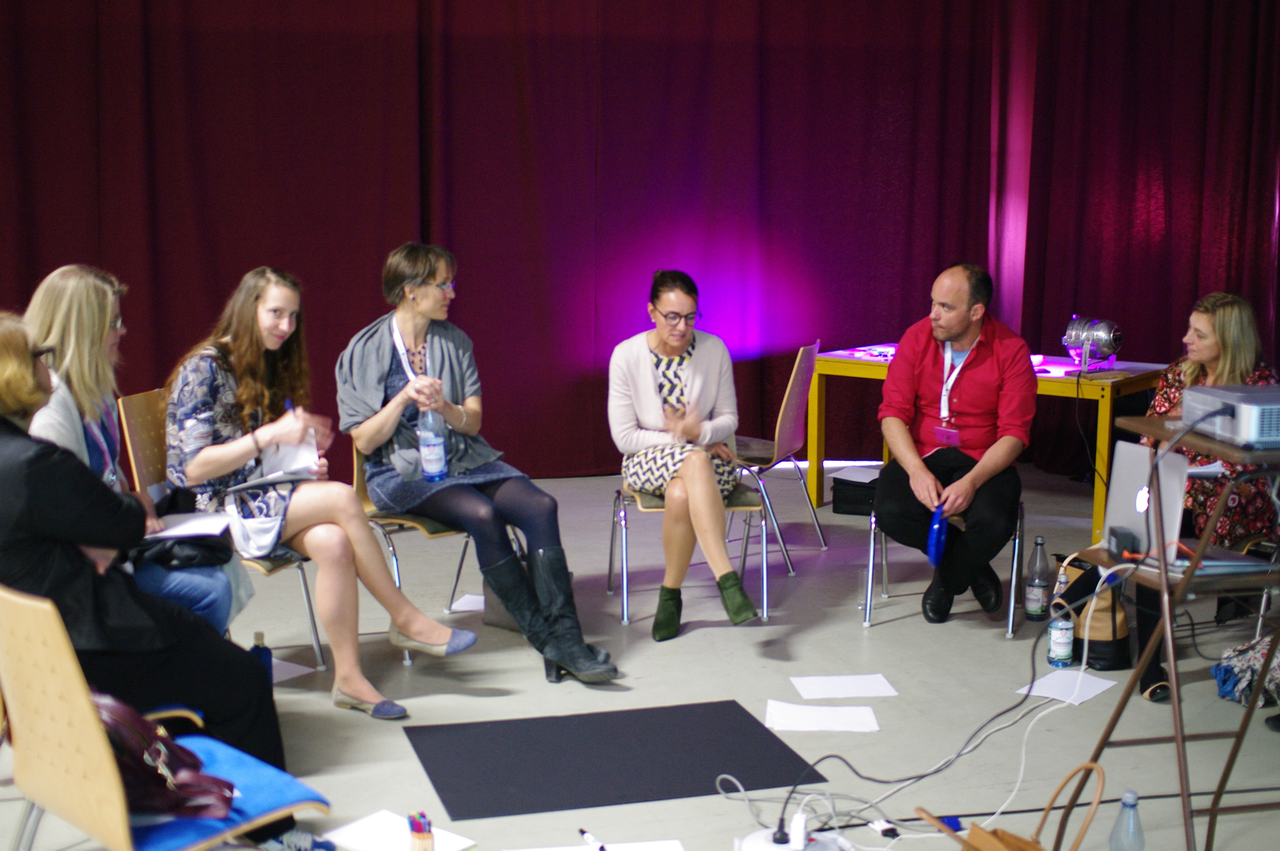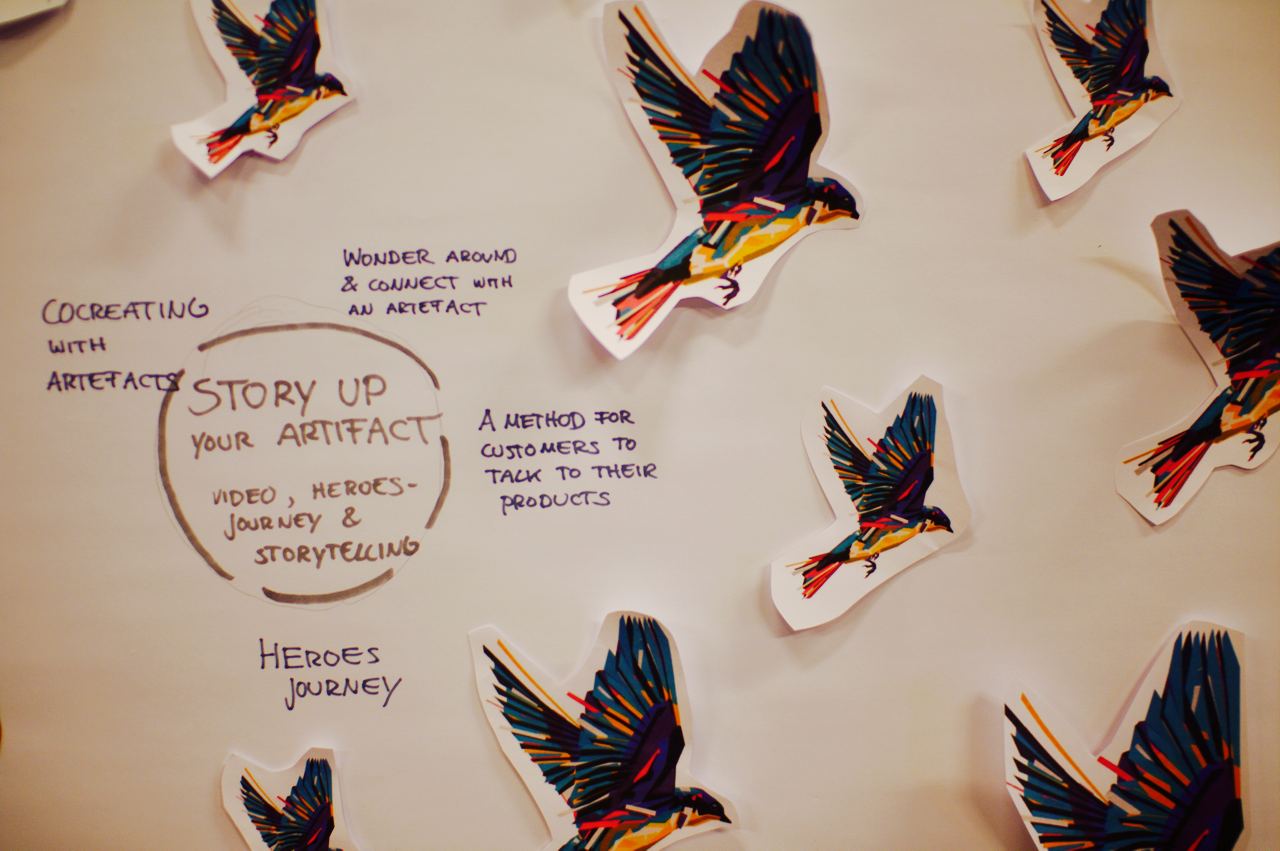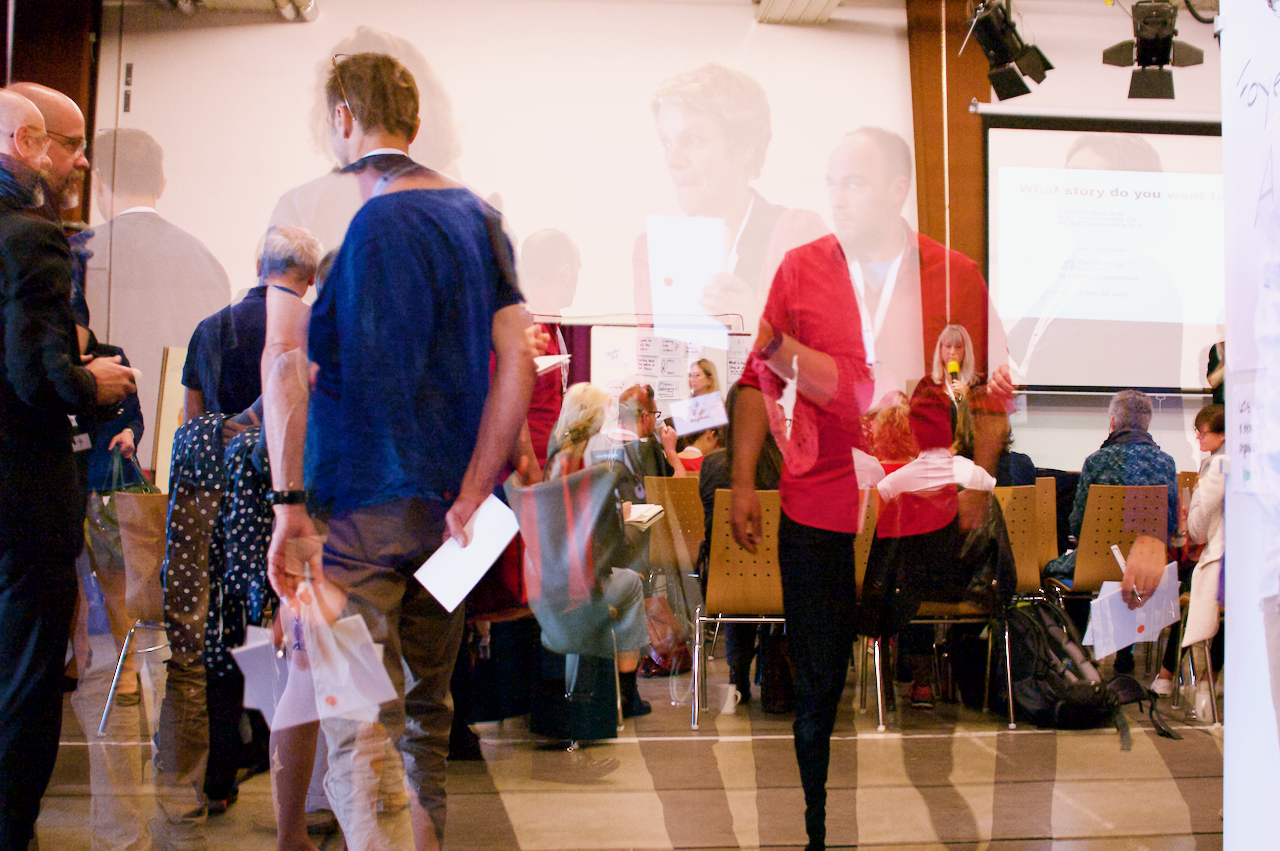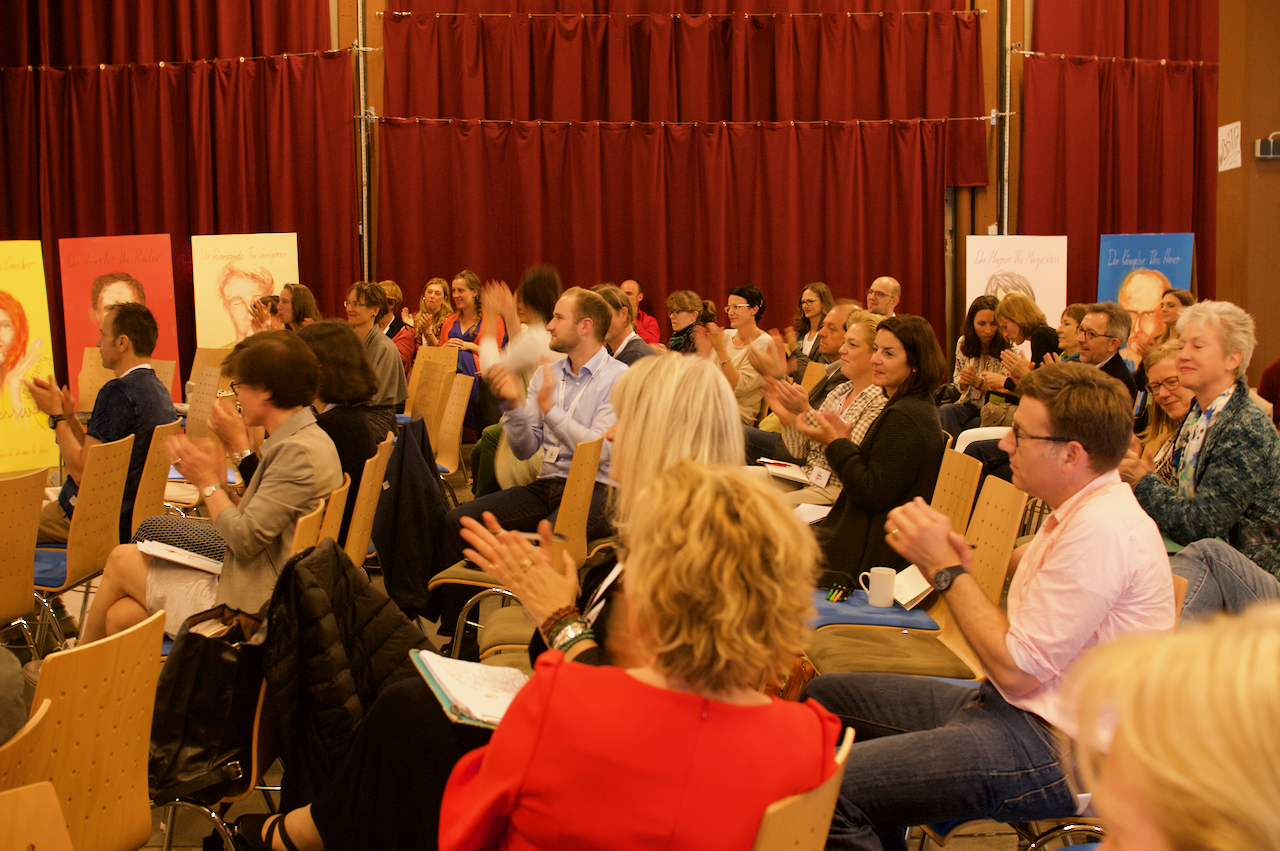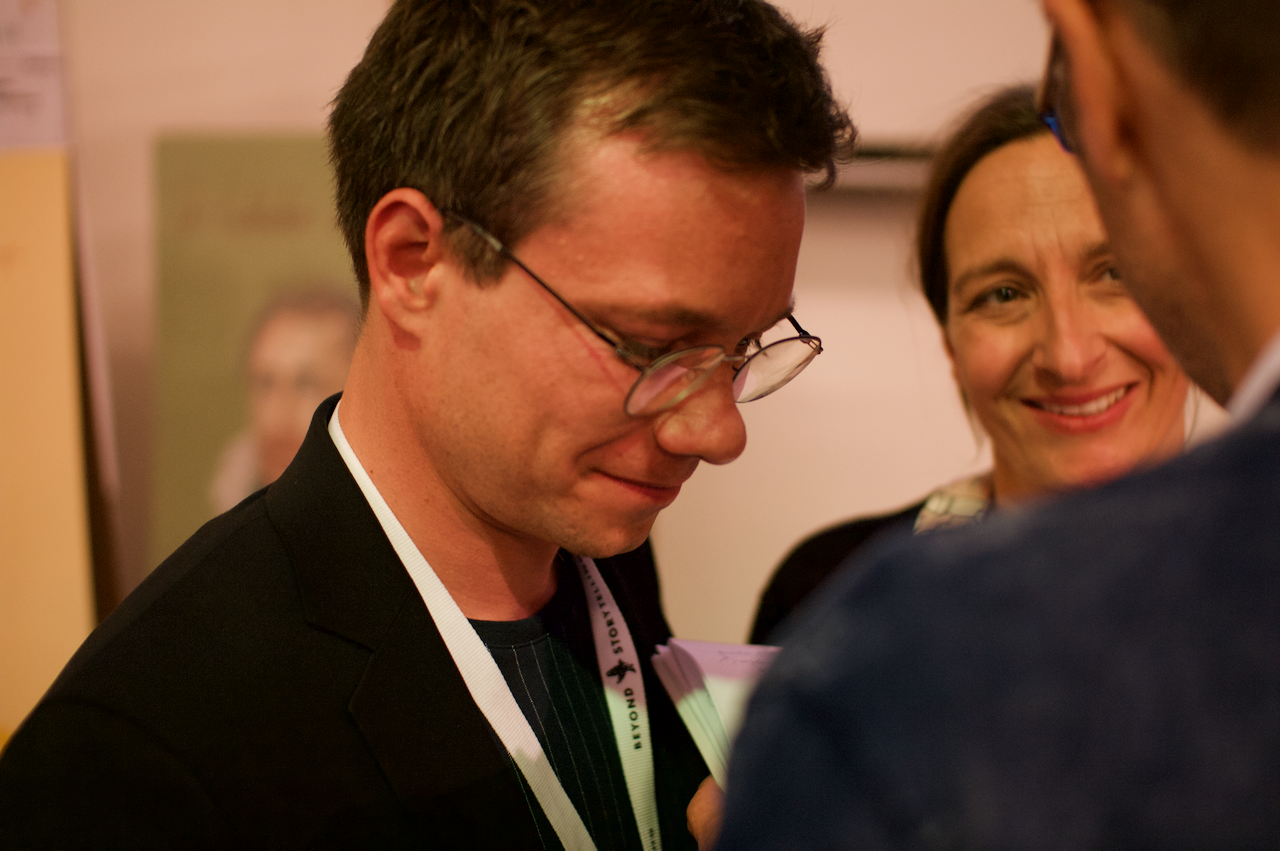In an inspiring introductory keynote, Michael Müller laid the groundwork for our journey “beyond storytelling” by providing us with a comprehensive summary of what the field of narrative management is about.
Michael Müller started out as a self-employed communications consultant 20 years ago, and is now not only one of the leading experts in the field of narrative management consulting but also professor for media studies and director of the Institute for Applied Narratology at Stuttgart Media University.
Michael Müller began his career with the observation that one learns more about an organisation over what gets said during a coffee break than what you find in the company brochure. Having studied literature among other subjects, Müller recognized the significance of these findings and turned what was merely a curious observation into an elaborate approach to organizational consulting.
Whilst Müller’s method would come to be known as the practice of “storytelling”, it could have initially been more accurately described as the practice of “listening” to stories. Only later did the focus shift to systematically looking at possible interventions once “the company in the mind of the employees” had been accurately described. This is how storytelling as an approach to organizational consulting came of age.
Müller emphasized that “storytelling” is not comparable to the many buzzwords in management literature that gain widespread currency before becoming a trend of the past. Rather storytelling belongs to the depth of Man’s cultural heritage. As pointed out in Yuval Noah Harari’s best seller Sapiens: A Brief History of Humankind (2014), the ability of humankind to construct and tell stories has been crucial to the survival of groups of 150 people or more. To borrow from the title of Jonathan Gottschall’s recent work, we are The Storytelling Animal (2012). Indeed, with our natural tendency to live and coexist together in large groups, applying the art of storytelling to an organisation is the logical conclusion.
When working with stories, the first thing that comes to mind is the subject of identity. Developmental psychologists argue that it is through stories that identity is constructed. This is no less true for organizations as well – with broad implications for the experiences employees and customers make and the placement and perception of products and services in the marketplace. Müller specified three areas that need to be distinguished when dealing with corporate identity: the external narrations (how customers, media and partners view the company), the internal narrations (concerning internal developments, experiences and projects) and the contextual narrations (related to society and history). However, whereas the importance of external narrations is widely acknowledged, for example when a major scandal necessitates a wholesale rebranding effort, internal narrations must also be fully embraced on an executive level.
The second crucial dimension in dealing with this task and corporate storytelling is that of time. It follows then that there are three angles from which to look at the subject: past, present and future. When exploring the past of our stories, the focus is on learning and gaining knowledge: how did stories develop, how do they define and predetermine who we are today? In the present, storytelling is crucial to how we act and communicate: what is the story we’re telling right now? This leads to the possibly decisive question for the long-term survival of a company: what is the story of our future? This is the area where storytelling skills are most often lacking. Many companies have no stories of their future, only a corporate document which cannot generate the necessary motivation to join in. In interviews, employees then often say: “we don’t know whether we have strategy”, whereas executives emphatically contradict: “of course, we do – we communicated it so many times”. When employees think of their company’s future, it’s hard for them to relate to a fact sheet.
In addition, when stories of the future are crafted, the essential role of the past is often overlooked. Following Jens Beckert’s Imagined Futures (2016), one must take into account that a good future story has to relate to and build on the past. Corporate stories often revolve around a main event which is not part of the “official” identity of the company but looms large in the “experienced” identity of its employees. In one company Müller consulted, many events in the past had led to the overarching story that change projects never get finished and fail anyway. This was the reason no one wanted to join a new change effort, as employees understandably didn’t want to be part of a failing project. The solution was to change that story by starting a relatively easy small-scale change project that was able to dispel the belief that “change projects never get finished”. Small change makes big change possible.
Müller’s final warning was to be aware of too simplistic a future story: “more, more, more” is not the recipe for a good story. Such straightforward stories are mostly unbelievable and almost always hard to relate to. Therefore, it makes sense to study the art of storytelling, and it is not a coincidence that the best and most convincing storytellers, such as Steve Jobs in the case of Apple, often build and develop the world’s most successful companies. The study of stories can help us navigate the cunning passages and contrived corridors of what is actually going on in an organization, and it is the art of narrative management that uses this as the foundation to lead a company into its successful future.
Niklas Gaupp works with narrative approaches in the area of change management after having received his doctorate from Oxford University for a thesis on Niklas Luhmann’s systems theory. He helped with and participated in the 2017 Beyond Storytelling Conference in Heidelberg.
Further readings:
Müller, M.: Einführung in narrative Methoden der Organisationsberatung. Heidelberg: Carl-Auer 2017.
Harari, Y.N.: Sapiens: A Brief History of Humankind. London: Random House 2014.
Gottschall, J.: The Storytelling Animal: How Stories Make Us Human. New York: Houghton Mifflin Harcourt 2013.
Beckert, J.: Imagined Futures: Fictional Expectations and Capitalist Dynamics. Cambridge, Massachusetts: Harvard University Press 2016.
http://www.narratives-management.de/





